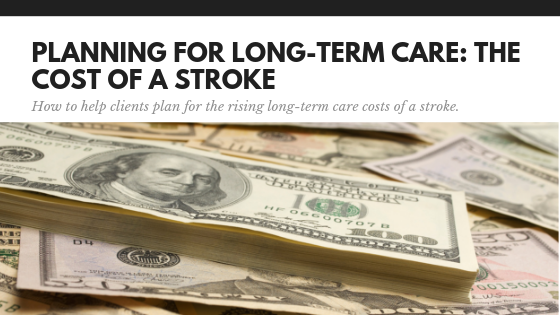When we think about long-term care in the United States, there are several diseases that come to mind. Cancer is often at the top of this list, similarly, chronic diseases such as diabetes or arthritis can cause people to be trepid about their future health care spending. But an often overlooked and sudden cause of long-term health expenses is having a stroke. The cost of stroke is high for many Americans and it’s only getting more expensive.
Why stroke costs are rising
The reason strokes can cause such financial hardship is because they come unexpectedly. While diseases such as cancer generally have a progression and time to adjust, strokes can be sudden and the amount of damage they cause can be immense. Loss of senses or immobility can happen in the snap of the fingers, leaving almost no time to prepare.
The question is, how does one expect the unexpected? While you are most likely not a health professional, that doesn’t mean you can’t have honest conversations with your clients about their health. Prioritizing their wellness now can save them tens of thousands of dollars in the future and postpone their need for long-term care.
How to better plan for clients’ long-term care costs
Such a topic can be sensitive, but numbers speak louder than most anything. Simple financial analysis and basic research can show both the risk for a stroke and the amount of money it could cost your client. Likewise, the sudden nature of strokes can be a great motivator for your clients to examine their lifestyle choices.
Genivity’s HALO report can also help take personal data from your clients, such as their health and family history, and give clients an idea of what their health care spending could look like in the years to come.
No matter how you decide to approach the topic, if you have a client who is making unhealthy lifestyle decisions, keep it in mind when calculating their future spending needs. Though this can be a tough topic to discuss, a cost analysis doesn’t lie. If you feel comfortable enough with your clients, approach them about the subject and use their calculated future health care spending as the impetus for such a conversation.

